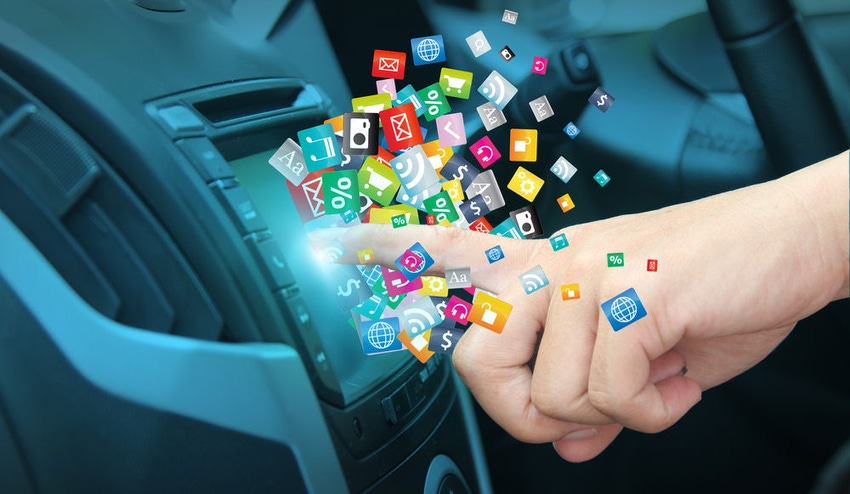It’s predicted that in as little as five years from now there will be more than 250 million connected cars on our roads, a fact which presents both a global opportunity for the Internet of Things (IoT), savvy car manufacturers and a huge challenge for the IT industry.
June 30, 2015

Telecoms.com periodically invites expert third-party contributors to submit analysis on a key topic affecting the telco industry. In this article Dean Anthony Gratton takes a look at the risks and opportunities associated with the connected car industry.
It’s predicted that in as little as five years from now there will be more than 250 million connected cars on our roads, a fact which presents both a global opportunity for the Internet of Things (IoT), savvy car manufacturers and a huge challenge for the IT industry.
It seems only yesterday that the term ‘Connected Car’ was just shorthand for ‘automotive infotainment,’ but today we’re looking at a vehicle that has the computing power of 20 personal computers, incorporates around 100 million lines of code, and processes up to 25 gigabytes of data an hour. An impressive line-up of IoT deliverables and a major headache for those in the industry faced with turning the hype into a safe and reliable reality. Personally, I see more potholes than smooth running on the road ahead if you’ll excuse the pun.
I’m a dreamer, but I’m not the only one
What’s more, connected car media, such as navigation and music streaming, could be worth the same amount on top, says GSMA (the telecoms industry body) and I have to admit that I’m more optimistic about this particular progression. Who wouldn’t love the ability to bond with their vehicles in such a way that they would know, just by the speed you were driving at what music to play and just by your body heat when to turn the air conditioning on? Crazy? Maybe I am. In the words of John Lennon, “You may say I’m a dreamer, but I’m not the only one” and the industry is full of this kind of hyperbole but, for me, we need to get our heads out of the proverbial ‘Cloud’ and focus on what really matters to the automotive industry and what can make the biggest difference to its consumers.
I read an article recently where a woman in a Renault Clio hit a kerb, which broke her car’s rear axil and sent her spinning across the road. Moments later, she received a call from her insurance company. “How on earth did you know?” the woman asked her insurers in disbelief, as they assured her that help was on the way. The answer lay in a small black box located beneath her dashboard. This SIM card-enabled device instantly sent the driver’s location and the force of impact to her insurance company, who then phoned for an ambulance. For me, this hits a chord of everything that could be right with the connected car. Saving lives, sharing the kind of data that makes our journeys safer and keeping our cars running at economical and environmentally sustainable levels is where the sweet spot lies. But let’s not get too carried away! There is of course the ‘Big Brother’ perspective and the availability of all that data; I feel myself breaking out in a sweat! And it gets worse!
Software is not a BORE!
In addition to the obvious risks and liabilities, car makers themselves must come to terms with imposing threats to their brand integrity and face up to the fact that their ‘new age’ connected cars are in constant danger of hacking and malicious attacks, analysis, malware injection, tampering, IP theft, piracy and key extraction. Suddenly I don’t feel so safe after all and I have to question whether we, as drivers of these vehicles, are facing a new and very real danger to both our digital and physical selves.
So how do we lower the risks? Well firstly, we need to hone in on all that sensitive software and harden it up through robust software protection schemes that can stop any malicious code in its tracks, preventing it crossing over from say the infotainment system to the vehicle control system. It’s a multifaceted problem however that needs to draw upon both hardware and software solutions from other markets, where exposure to hacking and poor software design has successfully been tackled. It’s not plagiarism it’s common sense! It’s a matter of ‘Class’ in fact, or perhaps should I say ‘Class breaks’, which are also known as BORE attacks (Break Once Run Everywhere). This is where potential hackers use the fact that most copies of the target software contain the same binary code images to develop a malignant reverse-engineering scheme.
I find myself breathing out cynicism
But despite the potential threats and the plethora of obstacles to be overcome, there’s no doubt that, with such huge revenue potential, the car manufacturers want in, joined by the likes of tech companies like Google, who are working on a self-driving car and, of course, Apple, who have started their own in-house automotive project. For them it’s all about selling the dream. They want us to feel cocooned by their technology within the comfort of our vehicles, free from the historical stresses and strains of traffic and able to rely on our car’s self-driving advancements to steer us through any motorway madness, while we, instead, are free to focus on increasing our in-app purchases enroute. Oh but wait! Could the connected car in fact just be another Apple store in disguise? Perhaps that’s just a little too paranoid, but let’s not forget that they are no doubt looking at the future through cash-tinted spectacles; and who can blame them?
Whether we like it or not the age of the connected car is upon us. I try to breath in the possibilities for a better world but find myself breathing out cynicism. There are still far too many questions that need answering before the connected car has me on board and it’s an IoT journey that I’m just not ready to take – at least for now!
Until next time…
So, next month is one year on since I initially looked at the IoT, tainted perhaps with a little cynicism, which admittedly is difficult to take away. Nonetheless, I will tackle that ‘one-year on’ piece I’ve been talking about and revisit the entire industry along with the new standards and various bodies that have emerged since. Hopefully, next month I’ll be able to look at the industry with a modicum of positivity!
So, this is where a hopeful, Dr G signs off.
About Dean Anthony Gratton
 Dr Dean Anthony Gratton is a bestselling author and columnist, and has worked extensively within the wireless communications R&D industry. His wireless research work has been patented. You can contact Dean via his website, and follow him on Twitter (@grattonboy) to enjoy his risqué humour, witty shenanigans, social media and technology-related tweets. You can also read more about his work at deangratton.com.
Dr Dean Anthony Gratton is a bestselling author and columnist, and has worked extensively within the wireless communications R&D industry. His wireless research work has been patented. You can contact Dean via his website, and follow him on Twitter (@grattonboy) to enjoy his risqué humour, witty shenanigans, social media and technology-related tweets. You can also read more about his work at deangratton.com.
Read more about:
DiscussionAbout the Author(s)
You May Also Like








.png?width=300&auto=webp&quality=80&disable=upscale)


_1.jpg?width=300&auto=webp&quality=80&disable=upscale)


.png?width=800&auto=webp&quality=80&disable=upscale)